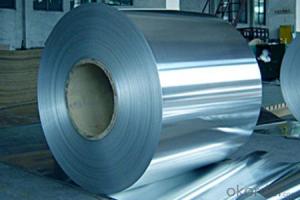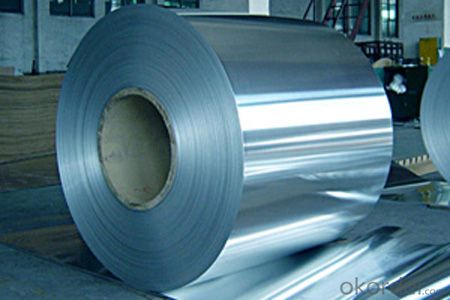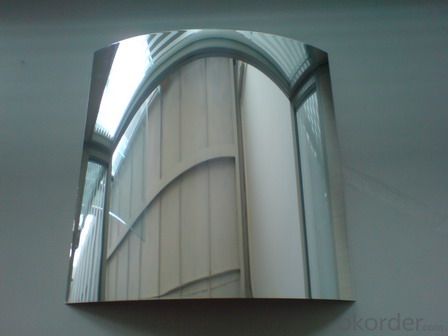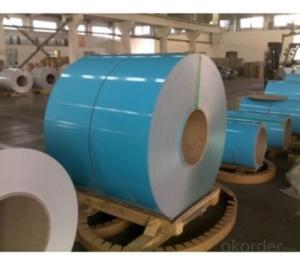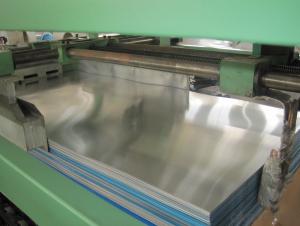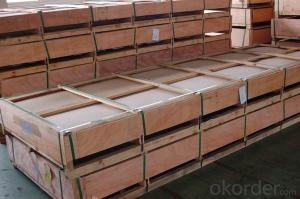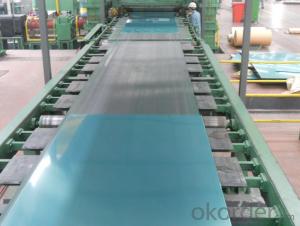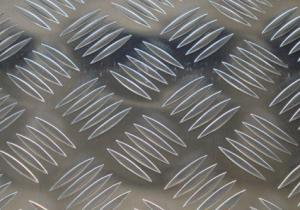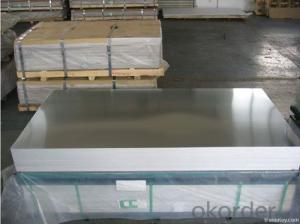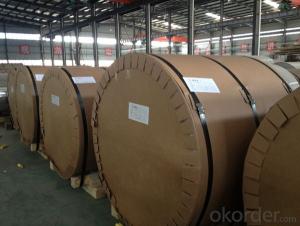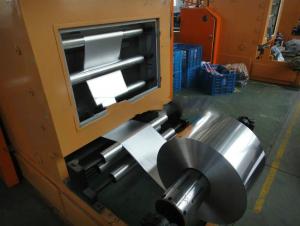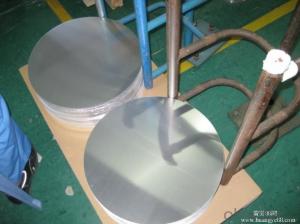7075 Aluminum Sheets for Secondary Continuous Cold Rolling
- Loading Port:
- Shanghai
- Payment Terms:
- TT OR LC
- Min Order Qty:
- 5 m.t.
- Supply Capability:
- 5000 m.t./month
OKorder Service Pledge
OKorder Financial Service
You Might Also Like
Specification
1.Structure of Aluminium Coils for Secondly Continuous Colding Rolling
Aluminium Coils for Secondly Continuous Colding Rolling can be rolled down to aluminium coil,sheet,circle ect. The alloy AA1050 is widly used in building, industry ect. Its weight is much lower than steel. So many customers choosed aluminium material instead of steel.
2. Main features of Aluminium Coils for Secondly Continuous Colding Rolling
a.Competitive price---We have our own mills and can produce mill finished aluminium coils, so we can control the production cost better.
b.Professional after-sale service---We have more than 15 years exportation experience and you need not worry about the exporation problems.
c.Fast delivery time---We can control the delivery time within 35 days.
3. Image of Aluminium Coils for Secondly Continuous Colding Rolling
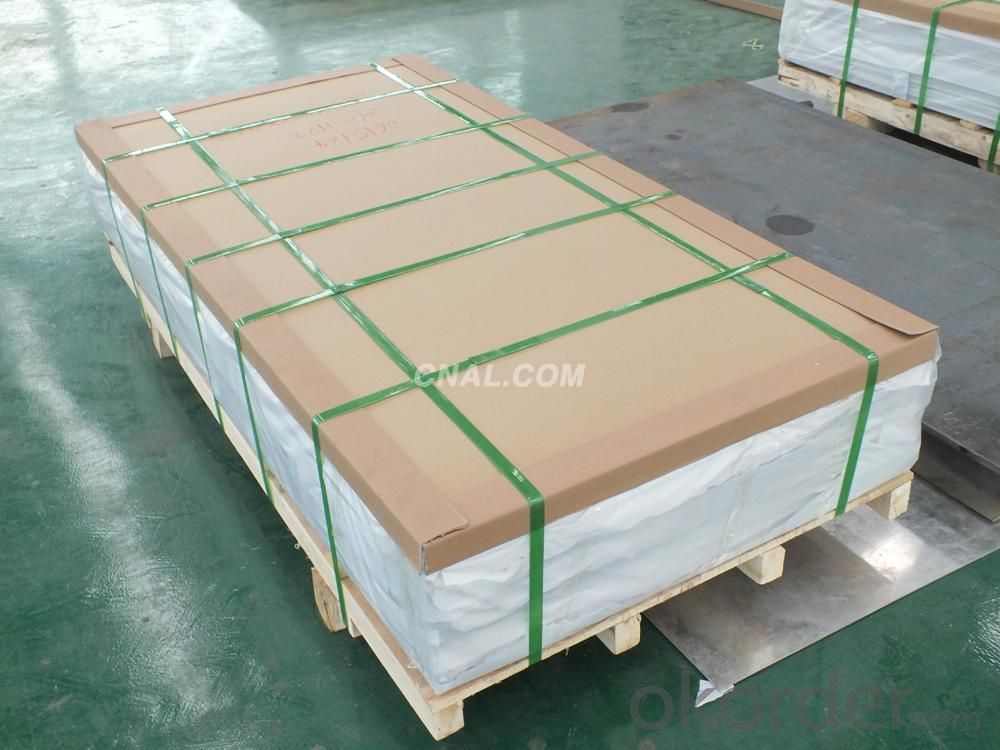
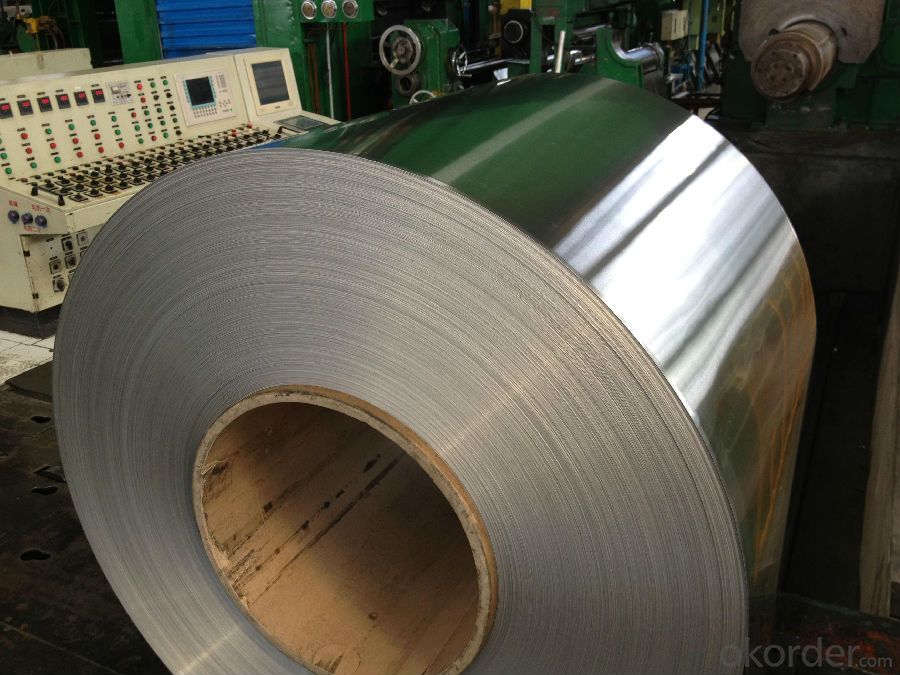
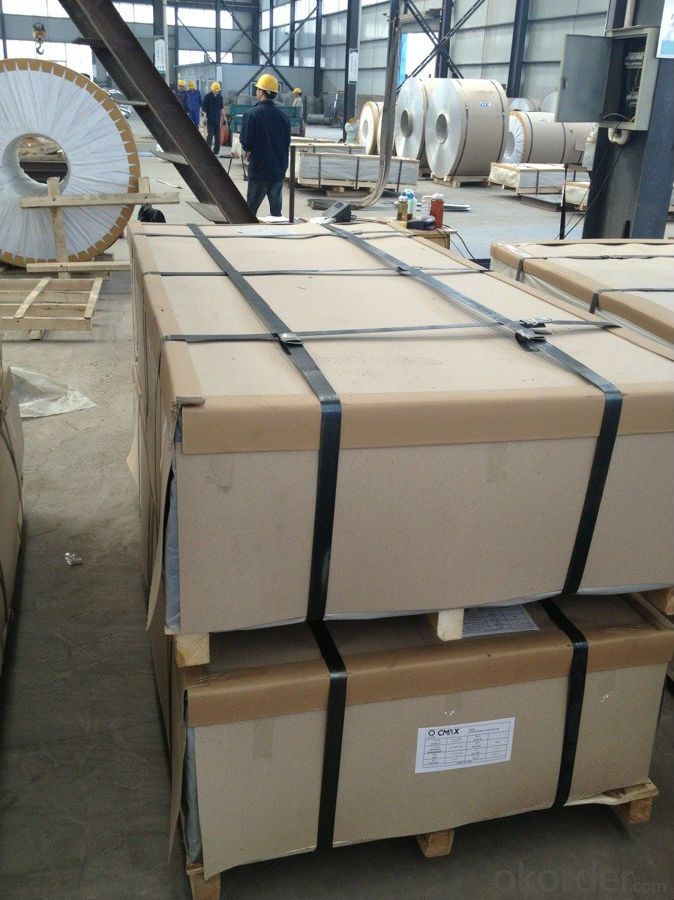
4. Product Specification
| Alloy | Temper | Thickness | Width | Weight |
| AA1050 | H14 | 0.2-3MM | 1000-1800MM | 2 tons |
5.FAQ:
What is the quality standard?
---Usually our standard is GB3880-2006
What is the largest width?
---It is 2300mm
What is the MOQ?
---Usually we can accept 80 tons.
- Q: What is the thickness of an aluminum sheet?
- The thickness of an aluminum sheet can vary depending on the specific application and requirements. Aluminum sheets are available in a wide range of thicknesses, typically ranging from 0.006 inches (0.15mm) to 0.25 inches (6.35mm) or even thicker. The thickness is usually measured in gauge, with higher gauge numbers indicating thinner sheets. It is important to consider the intended use and desired properties, such as strength, flexibility, or weight, when selecting the appropriate thickness for an aluminum sheet.
- Q: Can aluminum sheets be used for architectural facades?
- Architectural facades can indeed utilize aluminum sheets. This versatile material possesses numerous advantages for facade applications. Its lightweight nature, durability, and resistance to corrosion render it suitable for a variety of weather conditions. The fabrication and installation of aluminum sheets are effortless, enabling design flexibility and the creation of intricate and elaborate facades. Moreover, aluminum can undergo various finishes, such as powder coating, anodizing, or painting, to enhance its visual appeal and achieve the desired aesthetic. In summary, employing aluminum sheets for architectural facades empowers architects and designers with an extensive array of options to fashion visually captivating and enduring building exteriors.
- Q: What are the colors of iron sheet and aluminum sheet?
- they are both silver white.
- Q: Can aluminum sheets be used for packaging applications?
- Yes, aluminum sheets can be used for packaging applications. Aluminum is a lightweight, corrosion-resistant, and durable material, making it an excellent choice for packaging various products. It provides a barrier against moisture, oxygen, and light, which helps to preserve the quality and freshness of the packaged goods. Aluminum sheets can be easily formed into different shapes and sizes, allowing for customization and branding options. They are commonly used for packaging food and beverages, pharmaceuticals, cosmetics, and other consumer goods. Additionally, aluminum sheets are recyclable, making them a sustainable choice for packaging applications.
- Q: How do you cut aluminum sheets?
- There are various methods available for cutting aluminum sheets, depending on their thickness and size. Here, we will discuss some commonly used techniques: 1. Hand shears prove effective for thin aluminum sheets. These handheld tools feature sharp blades that can cut through the sheet by applying manual force. 2. For thicker aluminum sheets, power shears are a better option. These tools, either electric or pneumatic, have powerful blades that can effortlessly cut through the material. They are particularly useful for straight cuts. 3. When it comes to making curved or irregular cuts, a jigsaw with a metal-cutting blade comes in handy. Ensure you use a blade specifically designed for cutting metal. 4. Another method is using a circular saw with a carbide-tipped blade. This technique works well for straight cuts; however, it is crucial to securely clamp the sheet to avoid vibrations during cutting. 5. For precise shapes and sizes, Computer Numerical Control (CNC) machines are ideal. These machines utilize computer programs to control the cutting process, making them suitable for complex or repetitive cuts. Before cutting aluminum sheets, it is essential to prioritize safety. Wear appropriate gear such as gloves and safety glasses to protect yourself from sharp edges or metal shavings. Additionally, secure the sheet firmly in place using clamps or a vise to prevent any movement during cutting.
- Q: What are the different methods of cutting aluminum sheet?
- Various methods exist for cutting aluminum sheet, each offering unique advantages and applications. 1. Shearing: Employing a sharp blade, shearing provides a quick and efficient process for straightforward cuts. However, it may not be suitable for complex or intricate designs. 2. Laser cutting: By utilizing a high-powered laser beam, laser cutting achieves precise and clean cuts. This method is ideal for intricate designs, allowing for detailed and accurate cuts. Additionally, laser cutting can be automated, making it suitable for large-scale production. 3. Waterjet cutting: With a high-pressure stream of water mixed with abrasive materials, waterjet cutting is versatile and capable of handling various materials and thicknesses. It produces smooth and precise cuts without generating heat, making it suitable for heat-sensitive materials. 4. Plasma cutting: Plasma cutting involves using a plasma torch to heat and melt the aluminum sheet, resulting in a cut. It is a fast and cost-effective method, particularly for thicker sheets. However, the cut may not be as clean as laser or waterjet cutting. 5. CNC milling: By employing a rotating cutting tool, known as Computer Numerical Control (CNC) milling, material is removed from the aluminum sheet to create a cut. This method offers precision and the ability to produce complex shapes and designs. It is commonly used for prototypes or small production runs. When selecting the appropriate method for cutting aluminum sheet, factors to consider include desired cut quality, design complexity, material thickness, and production volume.
- Q: Can aluminum sheets be used for structural purposes?
- Indeed, structural purposes can be fulfilled by utilizing aluminum sheets. This material, known for its lightness and remarkable malleability, can be effortlessly shaped and sized in diverse forms. Thanks to its exceptional strength-to-weight ratio, it is an ideal choice for structural applications that prioritize weight reduction. In industries such as aerospace, automotive, and construction, aluminum sheets are commonly employed to create structural components like panels, beams, and frames. Moreover, the corrosion resistance of aluminum adds to its suitability for structural purposes, particularly in outdoor or marine settings. Ultimately, aluminum sheets present a dependable and economical solution for structural applications.
- Q: Can aluminum sheets be used for fencing?
- Yes, aluminum sheets can be used for fencing. Aluminum is a lightweight and durable material, making it suitable for fencing purposes. It is resistant to rust and corrosion, making it a long-lasting option. Additionally, aluminum sheets offer a sleek and modern look to any fence.
- Q: This question asks for methods to prevent rusting on aluminum sheets while they are being stored or transported.
- <p>To prevent rusting on aluminum sheets during storage and transportation, follow these steps: Store the sheets in a dry, cool environment away from moisture and humidity. Use protective coverings such as plastic wraps or sheets to shield them from dust and water. Avoid stacking them directly on the ground; use pallets or racks to keep them elevated. Regularly inspect the sheets for any signs of moisture or damage. If possible, apply a protective coating or sealant specifically designed for aluminum to create a barrier against corrosion. Proper handling and packaging can also reduce the risk of scratches or dents that could lead to rust.</p>
- Q: What specific conditions are necessary for the storage and transportation of aluminum sheets to ensure their quality and safety?
- <p>Yes, there are special requirements for storing and transporting aluminum sheets. Aluminum sheets should be stored in a dry, cool place to prevent moisture and temperature extremes which can cause warping or corrosion. They should be stacked flat and evenly to avoid bending or denting. When transporting, aluminum sheets should be secured to prevent shifting during transit, which can lead to damage. Protective coverings may be used to shield the sheets from dirt, scratches, or other potential hazards. It's also crucial to handle the sheets carefully to avoid bending or denting, which can occur if they are not properly supported during transport.</p>
Send your message to us
7075 Aluminum Sheets for Secondary Continuous Cold Rolling
- Loading Port:
- Shanghai
- Payment Terms:
- TT OR LC
- Min Order Qty:
- 5 m.t.
- Supply Capability:
- 5000 m.t./month
OKorder Service Pledge
OKorder Financial Service
Similar products
Hot products
Hot Searches
Related keywords
